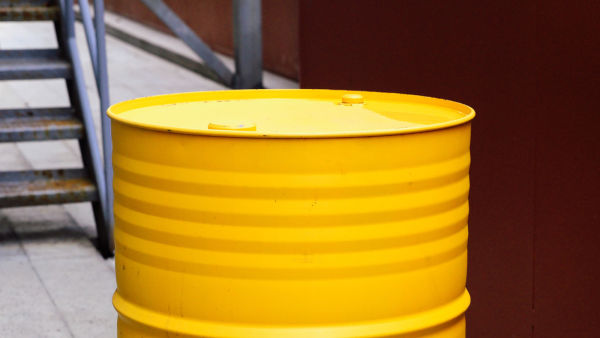Whether you own a hefty work truck or use a lot of gas-powered equipment around your home, it’s never a bad idea to keep a little fuel stored on your property. With a couple of cans of diesel fuel stashed in the garage or shed, you’ll always be able to refuel at a moment’s notice, you won’t have to trudge out to the gas station in bad weather, and you may have a little more resilience against fluctuating fuel prices.
Advertisement
While there are a lot of positives to keeping diesel fuel on hand, you should remember that storing fuel isn’t the same thing as keeping a battery pack in a kitchen drawer. Diesel fuel can be an extremely hazardous substance and needs to be stored carefully and mindfully in order to keep you and your property safe. It’s definitely not as simple as dumping some diesel into an uncovered glass jar and sticking it on a random shelf.
Be mindful of local and national fuel storage regulations
As diesel fuel is a hazardous substance, its use and storage are managed by two government organizations: The Occupational Safety and Health Administration, or OSHA, and the National Fire Protection Association, or NFPA. Both of these organizations have their own lists of rules, restrictions, and mandates for the storage and usage of diesel fuel.
Advertisement
The precise rules that apply to you depend heavily on where you live. Some states have adopted the current NFPA Fire Codes as mandatory requirements, while others merely follow them as guidelines. The rules put forth by OSHA (PDF)however, are all-encompassing. Businesses that are found to be in violation of these rules could face penalties — but, more importantly, storing fuel improperly could pose a real risk to your health and safety. Before you even consider storing diesel fuel, do some research on your local laws and familiarize yourself with OSHA fuel storage regulations.
Store your diesel in an approved container with the right features
The next step before you can actually get to storing diesel fuel is to choose the right storage receptacle for the job. You can’t just grab any old container from the kitchen cabinet and start dumping fuel into it — for safe, long-term storage, you need a container that’s approved for the express purpose of safely isolating flammable liquids.
Advertisement
Based on OSHA standards, you have to store diesel fuel in a container that’s gotten the okay from OSHA or from the Department of Transportation (DOT). You’ve got five categories of containers to choose from, each approved for a different volume of diesel fuel. DOT-approved plastic or glass containers can store up to 1 quart, compact metal containers can store up to 5 gallons, traditional fuel safety cans can store up to 5 gallons, large metal drums can store up to 60 gallons, and a full-sized portable fuel tank can store up to 660 gallons.
Small, sub-5-gallon fuel cans must have the appropriate features, including a flash arrestor screen, a spring closing lid, and a spout cover. As long as it has those features, it’s good to use. These will typically have a label to show OSHA compliance, like this Eagle 5-gallon diesel gas can. As an added note, you should opt for yellow storage containers if possible. Differently-colored cans correspond to different kinds of fuel, and yellow is the official color for diesel.
Advertisement
Be careful when filling and handling a fuel container
Assuming you’re in compliance with all local regulations and have a suitable container ready to go, then you can get some diesel fuel from your local gas station. We cannot stress enough, though, that this is a flammable, potentially volatile substance, and must be treated with great care from the moment you pump it to the moment you put it down in your garage.
Advertisement
When you first go to fill your container, make sure the fuel nozzle is all the way inside the container’s opening before starting the fuel flow, ensuring that the tip is always in contact with the container and firmly in your grip. This will help ensure that none of the fuel is splattering out onto you, the container, or the surrounding ground. Make sure there are no potential sources of sparks nearby when you fill the tank, such as an electrical outlet or a lit cigarette.
Remember, it only takes one stray spark to light up the whole container. Finally, make sure to keep your face a reasonable distance away from the opening when pouring fuel, as you don’t want to get a faceful of fumes. The American Petroleum Institute suggests only filling the container up to 95% of its capacity, just to leave a little room for potential expansion. Once the fuel is in there, close up the lid and make sure it’s got an airtight seal.
Advertisement
Store fuel far from any potential hazards
So you’ve got your new can of diesel fuel and have brought it home to your garage or shed. The next big question is where you’re supposed to put it. The obvious assumption is to just stash it in the furthest corner of your garage, out of the way of anything else, but while that might work, there are some considerations you need to keep in mind.
Advertisement
First, much like when you were first pumping the fuel, you need to be certain that the container is stored at least 50 feet away from any potential sources of ignition. This could include things like power outlets, heating installations, or even just windows that receive direct sunlight. It’s one thing if people are coming and going on a regular basis, but if someone is going to be in the garage or shed for long periods of time, it might not be a good idea to store it there.
Additionally, if you or anyone in your household smokes, do not do it in the vicinity of the fuel container, ever. If your container is between 25 and 60 gallons, OSHA requires that you get it a standalone storage cabinet with thick plywood and fire-resistant paint. Fire isn’t the only potential hazard to your fuel — you should also be on the lookout for errant sources of water, like puddles or condensation, as this could create rust on metal cans. If water accumulates on or around your container, especially if it’s metal, it could start to corrode and leak.
Advertisement
Don’t store diesel for over six months
Once you’ve found a good home for your diesel fuel in your garage or shed, the last order of business is taking note of the precise date and time that you’re storing it. You should write that date on the side of the container with a permanent marker, and consider also leaving a note for yourself in a place you can see it, like the fridge or your desk.
Advertisement
Diesel fuel begins to degrade in about 30 days if it’s not treated, though its precise shelf life can vary a bit depending on local atmospheric conditions. If you’re planning on storing this diesel fuel long-term, remember to add a fuel stabilizer to the container before you leave it. This will help the fuel endure changes in temperature and oxidation.
With proper treatment, diesel fuel can last anywhere from 6 to 12 months in mild temperatures, possibly longer with additional treatments. This is why it’s so important to keep a note of the storage date: As time passes, you should periodically check in on the fuel to ensure it hasn’t gone sour. If it passes its shelf life and starts to get gunky, you’ll need to dispose of it at a recycling facility.
Advertisement








